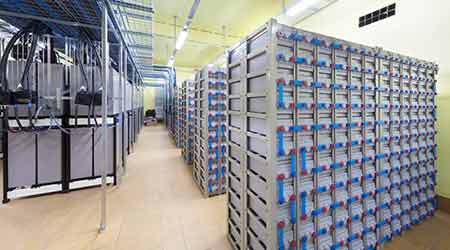4 Levels of Power Reliability Meet Varying Facility Needs
Perform a feasibility study to determine total cost of ownership for the appropriate level of power reliability for your specific facility needs.
Power is the commodity we all expect to work 24/7/365. When it doesn’t, it’s a major cause for concern.
Today’s businesses have a growing need for stand-by power, whether it’s to keep IT equipment operating, prevent losses of unsaved data, or maintain business operations. More and more are exploring stand-by power options to maintain a desired level of reliability, beyond emergency and legally-required stand-by power. Small and large businesses alike realize that a hard shut down not only leads to downtime but can also cause permanent IT equipment failure, resulting in longer outages even when the power comes back on.
Organizations that strive to install the most resilient power systems face three common roadblocks: base building infrastructure limitations, space, and cost. Available base building infrastructure, including generators, transfer switches, and associated distribution to the tenant area will all dictate the amount and architecture of the stand-by power system a tenant can deploy. Understanding a base buildings’ back-up power availability is critical before signing a lease.
When a tenant needs more back-up power than the base building can provide, they’ll need to specify their own stand-alone, stand-by power system in lieu of tying into existing base building stand-by power infrastructure. The physical space necessary to house the tenant’s stand-by power equipment will determine viability.
Businesses with specific power or reliability needs will want to commission a feasibility study that outlines base building power availability and distribution as well as space for potential upgrades prior to signing on as a tenant, in order to determine the costs involved in ensuring the appropriate level of power and reliability.
A feasibility study will include the following total cost of ownership considerations for stand-by power:
• Stand-by power systems equipment costs. This will be a capital line item on the budget.
• Stand-by power systems equipment maintenance. Performing regular preventive maintenance ensures that back-up power will be there when needed.
• Space. Additional stand-by power systems equipment for higher reliability will require more real estate, and thus increase rent.
• Replacement costs. Uninterruptible power supply batteries must be replaced every five to 10 years, and a UPS system, every 15 years.
• Base building upgrades. All or a portion of the cost associated with upgrading base building infrastructure may be tenant responsibility.
At the same time, tenants will want to determine their stand-by power redundancy needs, in terms of “N” or “need.” Regardless of what’s desired, base building infrastructure limitations, space, and cost will determine what’s feasible for each tenant. A close look at four levels of power reliability – N, N+1, resilient N+1, and 2N — can demystify the choices. Two concepts are important to keep in mind: concurrent maintainability and single points of failure. Concurrent maintainability means that any piece of equipment can be taken offline and put back online without affecting the base load. For example, in an N+1 system, one UPS module can be shut down for maintenance while the other module or modules continue to handle the load.
A single point of failure in terms of stand-by power systems means a single component of the distribution system that, upon failure, causes an outage to the load. Examples of single points of failure are entire panels, individual circuit breakers, feeders, or the stand-by power system equipment itself.
Related Topics:

















